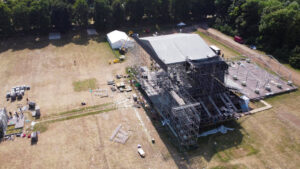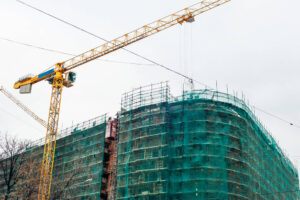The world of construction has been constantly evolving, with advancements in technology and design shaping the way we build structures. One such innovation that has gained immense popularity is metal building systems. These systems have revolutionized the construction industry, offering numerous advantages over traditional building methods.

In this article, we will explore the various aspects of metal building systems, including their benefits, design flexibility, sustainability features, and their applications in different sectors.
- The Advantages of Metal Building Systems: Metal building systems bring a host of benefits that have contributed to their growing popularity. First and foremost is their durability and strength. Metal, particularly steel, is a robust material capable of withstanding harsh weather conditions, including high winds, heavy snow loads, and earthquakes. These systems also offer exceptional fire resistance, providing a safer environment for occupants.
In addition to their strength, metal building systems are highly cost-effective. They offer faster construction times compared to traditional methods, as most components are pre-engineered and fabricated off-site. This results in reduced labor costs and quicker project completion. Furthermore, metal buildings are low-maintenance, requiring minimal upkeep and repair over their lifespan.
- Design Flexibility: Metal building systems provide architects and designers with a wide range of design possibilities. They can be easily customized to suit specific requirements, accommodating various aesthetic preferences and functional needs. With advancements in technology, metal buildings can now be designed with intricate details, complex shapes, and eye-catching facades.
The versatility of metal allows for large clear-span spaces, making them ideal for commercial and industrial applications such as warehouses, factories, and aircraft hangars. Additionally, metal building systems can be easily expanded or modified, providing flexibility for future changes in functionality or space requirements.
- Sustainable Features: In an era where sustainability is a critical consideration, metal building systems offer several environmentally friendly features. Steel, the primary material used in these systems, is highly recyclable. This promotes the efficient use of resources and reduces waste. Additionally, the energy required to produce and transport steel has significantly decreased over the years, further minimizing the carbon footprint.
Metal buildings can also be designed to maximize energy efficiency. They can incorporate insulation, cool roofs, and energy-efficient lighting systems to reduce energy consumption. Furthermore, metal roofs are excellent for integrating solar panels, allowing for the generation of clean, renewable energy on-site.
- Applications in Different Sectors: Metal building systems find applications across various sectors. In the commercial sector, they are commonly used for retail stores, office buildings, and shopping centers. Their ability to provide large, open spaces and adaptability to different design aesthetics make them a popular choice.
The industrial sector benefits greatly from metal building systems due to their strength, durability, and clear-span capabilities. Factories, warehouses, and distribution centers rely on metal structures to accommodate heavy machinery and storage requirements.

Metal building systems are also well-suited for the agricultural sector. Barns, stables, and storage facilities can be efficiently constructed using these systems, providing a secure and durable environment for livestock, machinery, and crops.
Metal building systems have revolutionized the construction industry by offering durability, cost-effectiveness, design flexibility, and sustainable features. They have become a preferred choice across different sectors, providing functional and aesthetically appealing structures. With ongoing advancements in technology and design, metal building systems will continue to shape the future of construction, catering to evolving needs while prioritizing sustainability.
Learn more at Wiki as well.